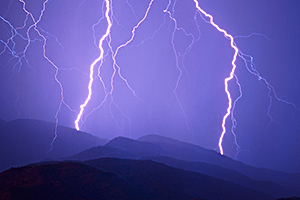It’s that time of year again when the weather can be more unpredictable than usual. As we move away from the winter snow, taking a moment to remain weather aware is never a bad idea. Severe thunderstorms become commonplace in April and continue throughout the summer.
For starters, remember the difference between a watch and a warning given any weather situation. A watch means that conditions are right for a specific weather event to develop while a warning means that the specific weather event is imminently occurring. A Severe Thunderstorm Watch means that the conditions could develop that would produce inclement weather given the temperature, humidity, and atmospheric conditions. A Severe Thunderstorm Warning means that a storm is approaching your location or is already in progress.
Not all flooding is a flash flood, either. There also exists an Areal Flood Warning. The National Weather Service says this is flooding that develops more gradually, usually from prolonged and persistent moderate to heavy rainfall. This results in a gradual ponding or buildup of water in low-lying, flood prone areas, as well as small creeks and streams and even parking lots.
While this area of the country is generally not under threat from them, a few weak tornadoes can spring up from time to time. These usually are associated with severe thunderstorms or the rare occasion that the area is affected by a coastal hurricane moving inland.
It is an excellent idea to check with your insurance agent and make sure that your coverage has severe weather riders. In most cases, unless you specifically have arranged it, floods are not covered by most insurance policies. You can obtain flood insurance by enrolling in the National Flood Insurance Program administered by FEMA. You can purchase flood insurance regardless of if you live in a flood plain or flood prone area.
It is hoped that this brief post about severe weather will nudge the reader to take a moment to gather important documents. Keep them in a lockbox in a central area in your home. In case of emergency, all the necessary paperwork will be in a quickly retrievable location. Items you might include are insurance documents, birth certificate, and social security card. You may also keep a list of the serial numbers of your appliances and electronics, and even a SIM card with photos of the interior of your home showing the contents as it is before any disaster.

